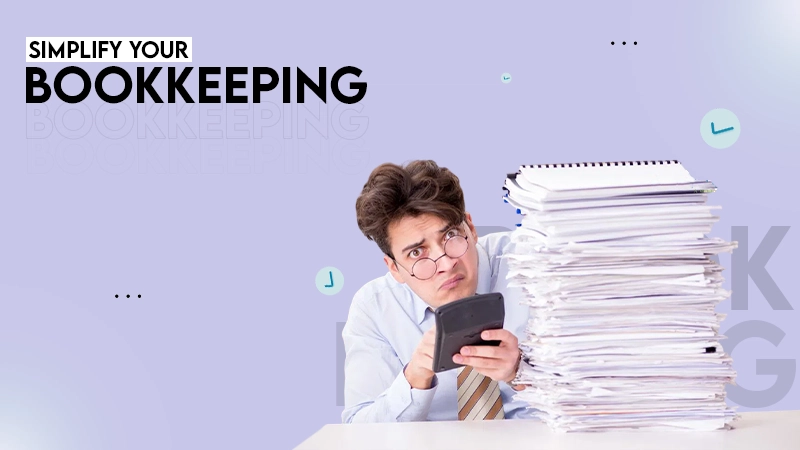How EdTech Is Leveling the Playing Field in Developing Countries

In many parts of the world, good education isn’t available to everyone. Problems such as inadequate infrastructure, insufficient teachers, and financial constraints have made it more challenging for students in developing countries to learn effectively. However, over the last decade, one answer has been making significant changes in classrooms and communities: learning technology, also known as EdTech.
From tablets that run on sunlight to learning apps on phones, EdTech is helping students overcome problems that once made regular learning very challenging. It’s not just about giving information. It’s about creating flexible, inclusive, and scalable ways to learn. For students who may never set foot in a well-equipped classroom, EdTech tools, such as writing services and others, now make it possible to complete homework of any complexity, access advanced subjects, and connect with educators beyond borders.
The Power of Mobile Learning and Offline Access
One of the best aspects of EdTech in developing countries is that it can function effectively even without reliable internet. In places where internet connections are hard to find, apps designed for phones and tools that work offline have made a huge difference.
For students, this has been especially beneficial. If you’re struggling with assignments and need help while offline, you might even consider searching for a service to get essay written, allowing you to focus on learning rather than stress over deadlines.
Case Study: EduBridge (India)
EduBridge, a mobile learning platform in India, provides career training, soft skills development, and test preparation to young people in rural areas. With mobile penetration growing even in low-income households, tools like EduBridge help bridge the digital divide by utilizing basic smartphones and minimizing data usage.
Interactive Whiteboards in Africa
In parts of Sub-Saharan Africa, EdTech companies have deployed low-cost interactive whiteboards powered by solar energy. These tools enable teachers in remote areas to display digital lessons and multimedia content, even in areas with limited or no electricity or Wi-Fi.
Other Offline Innovations
- Kolibri: An open-source learning platform that delivers content without needing the internet, used in refugee camps and remote schools.
- Eneza Education: Offers SMS-based learning for students in Kenya and Ghana, reaching users who lack access to smartphones or Wi-Fi.
These tools are not flashy, but they are high-impact, designed to function in real-world conditions where traditional educational models struggle to take root.
Supporting Teachers and Self-Directed Learning
EdTech is not only reaching students. It’s also supporting teachers, many of whom work in under-resourced environments with limited training opportunities.
- Professional development apps offer on-demand training in classroom management and lesson planning.
- Digital assessment tools enable teachers to evaluate student progress efficiently, eliminating the need for time-consuming paperwork.
- AI-based coaching platforms provide feedback and suggest instructional strategies.
Additionally, EdTech fosters self-directed learning, enabling students to review lessons at their own pace, repeat material as needed, and access tutorials on subjects not covered in local curricula.
This is particularly impactful for older students preparing for high-stakes exams or looking to gain practical job skills outside the classroom.
Addressing Local Needs with Global Tools
The most effective EdTech tools in developing countries are those that align with local languages, cultures, and school programs. For example:
- In Bangladesh, some platforms teach in Bengali and use examples that match local culture.
- In Nigeria, learning apps follow the school curriculum and help students get ready for WAEC and NECO exams.
- In Latin America, EdTech companies are incorporating indigenous languages to reach students in rural or multilingual areas.
This localization ensures that students not only receive information, but they also understand and connect with it, improving comprehension and retention.
Challenges: Digital Literacy, Funding, and Sustainability
Despite the progress, major challenges remain in ensuring EdTech delivers long-term impact.
⚠️ Digital Literacy
Even when students and teachers have access to devices, they often lack the knowledge to use them effectively. Learning how to use the tools effectively is crucial to maximizing the benefits of EdTech.
⚠️ Infrastructure Gaps
Access to electricity, internet connectivity, and affordable data remains inconsistent, particularly in remote areas. Offline functionality can only go so far when hardware or basic infrastructure is missing.
⚠️ Funding and Policy Support
Many EdTech initiatives rely on short-term grants or partnerships with NGOs. For true sustainability, governments must invest in infrastructure, teacher training, and the integration of curriculum.
Without systemic support, even the most promising tools risk falling short of their potential.
The Role of EdTech in Future Global Education

EdTech isn’t a perfect solution, but it can help make education more equitable in places where factors such as location, finances, or politics have made it harder to learn. With the right technology and local support, more students can receive a quality education, even in areas that were previously underserved.
Even at the higher education level, students in developing countries are now accessing online degree programs, open courseware, and even dissertation writing service platforms that support their academic growth beyond secondary school.
The next frontier? Building systems where EdTech doesn’t just support learning, but changes it completely, making it possible for everyone to continue learning throughout life, regardless of their background or location.
Final Thoughts
EdTech isn’t just making classrooms more modern. It’s changing who can learn and how they learn. In developing countries, where schools face significant challenges, these tools provide students with access and control over their learning. With continued innovation, investment, and community involvement, the digital classroom could become the most inclusive classroom the world has ever seen.
You don’t know how much you rely on your laptop until it acts up. The cursor stops moving. The fan…
Imagine this: You are juggling ten things—one tab for work, one for shopping, and one for that article you wanted…
The majority of engineering teams work at a much slower pace than they could because of systematic friction in their…
The dramatic evolution of eCommerce in the last decade has reshaped consumer expectations regarding speed, convenience, and sustainability. As a…
Payroll mistakes can lead to fines, delayed payments, and payroll disputes. These payroll issues can create pressure for high-risk businesses…
Property management teams can benefit from data in a number of ways. Everyone understands that it’s critical to make wise…
Fantastic things don’t just happen. They occur when teams transform hazy inputs into clear and actionable decisions for everyone, replacing…
There are lots of tasks that are generally very amusing and thrilling; however, bookkeeping is definitely not one of them.…
In the fleetly evolving geography of digital education, using slice- edge software development services are essential for creating poignant literacy…




